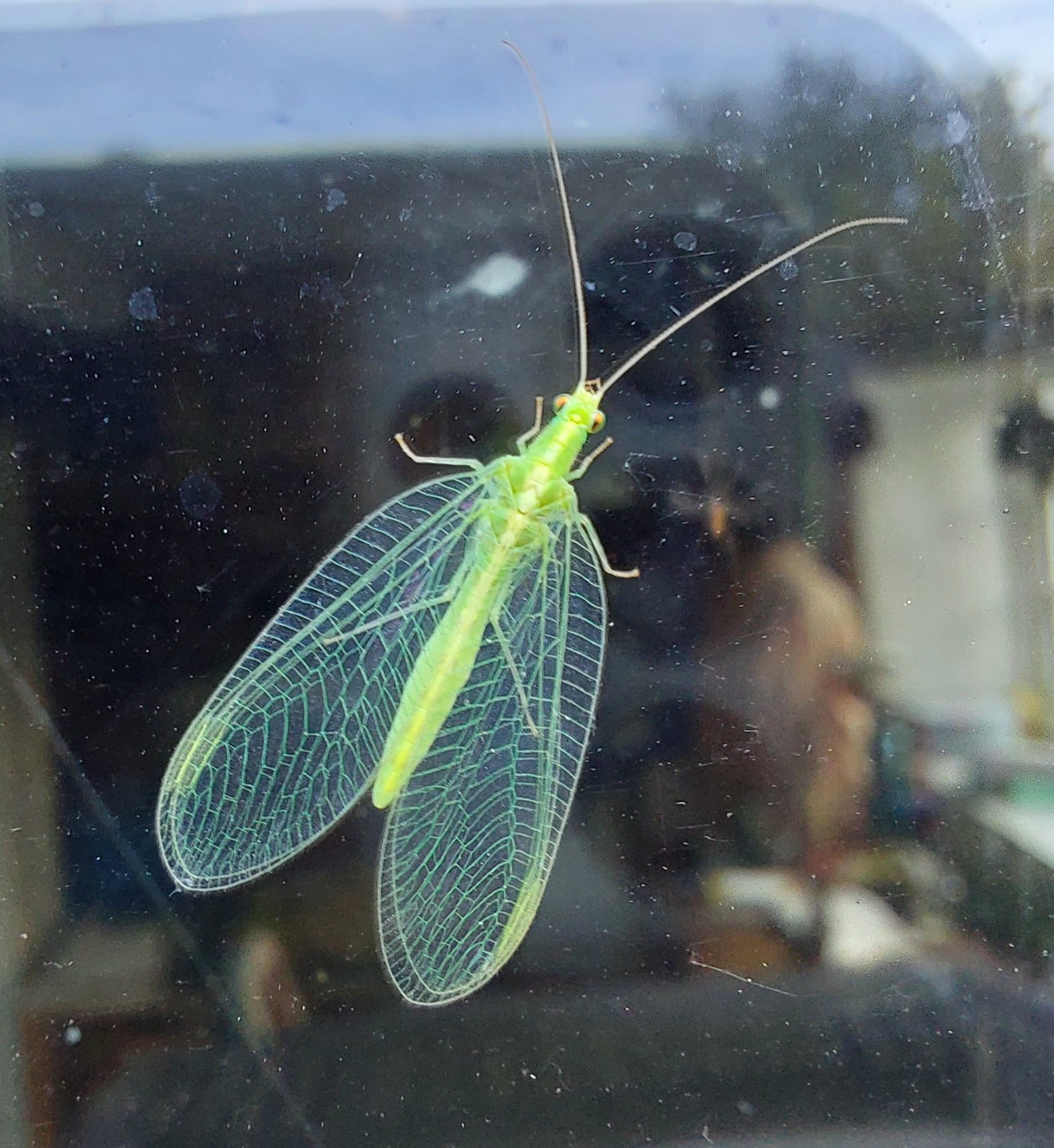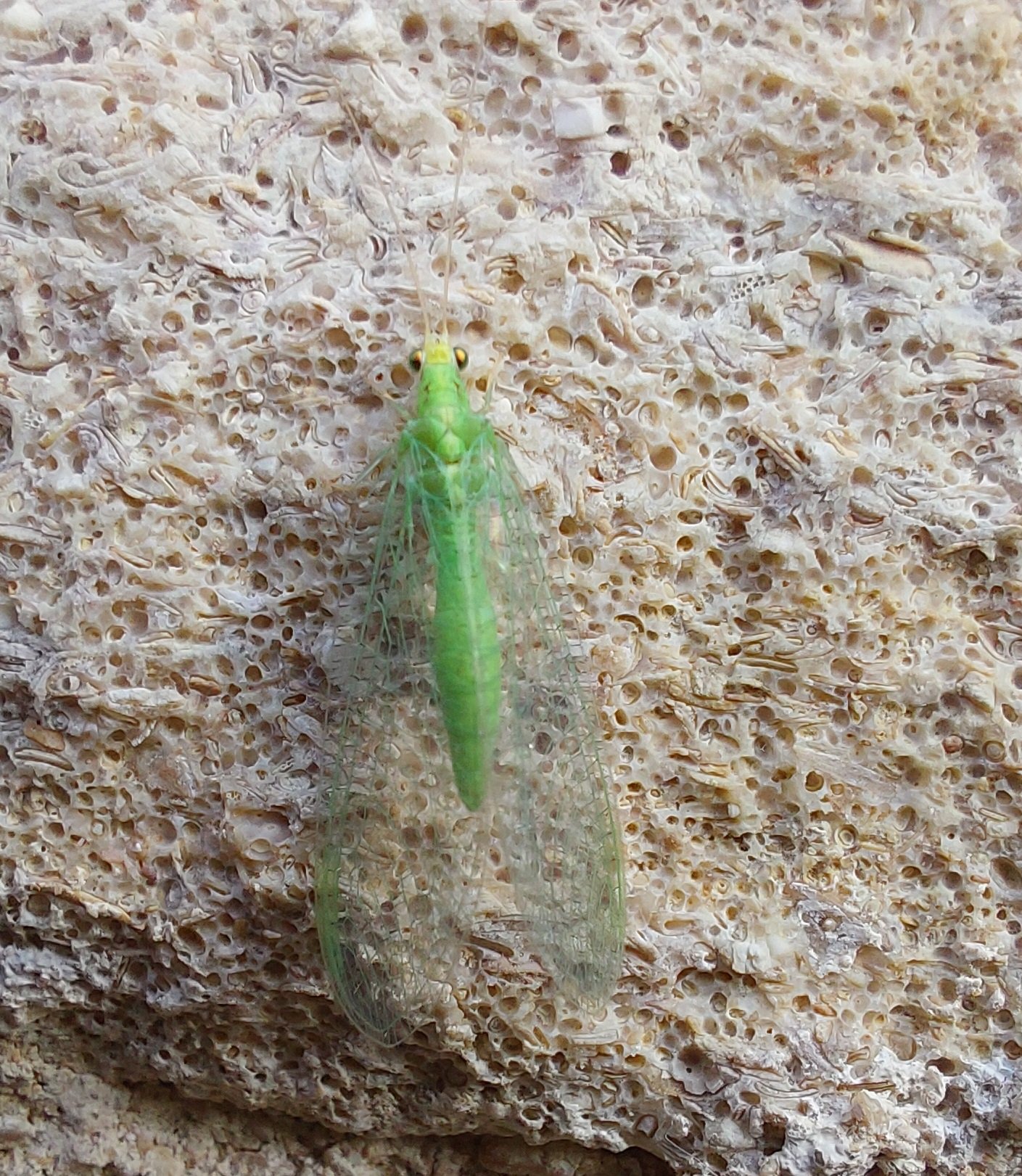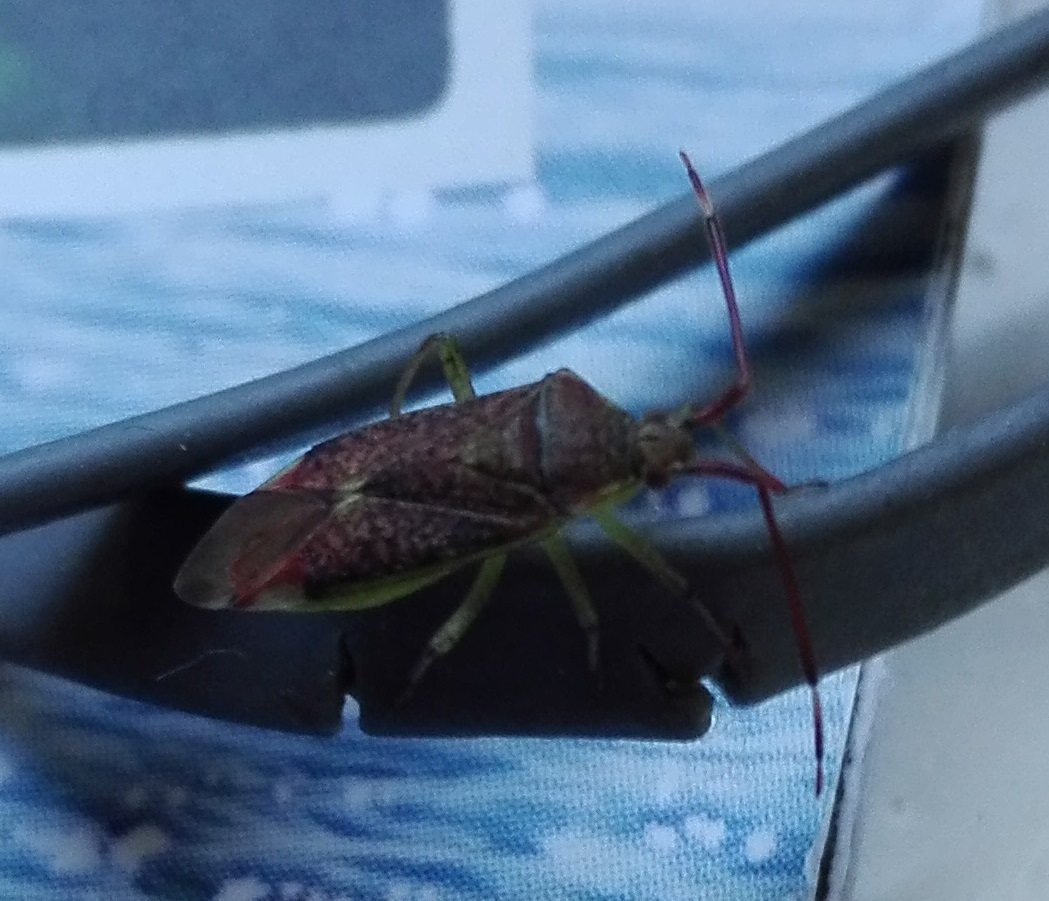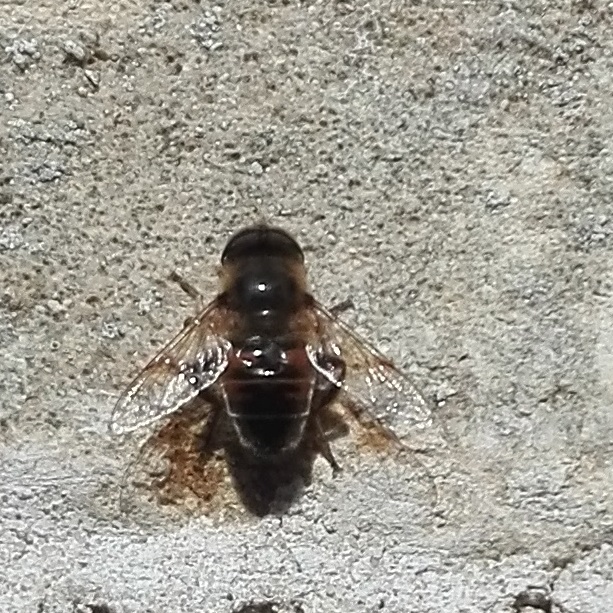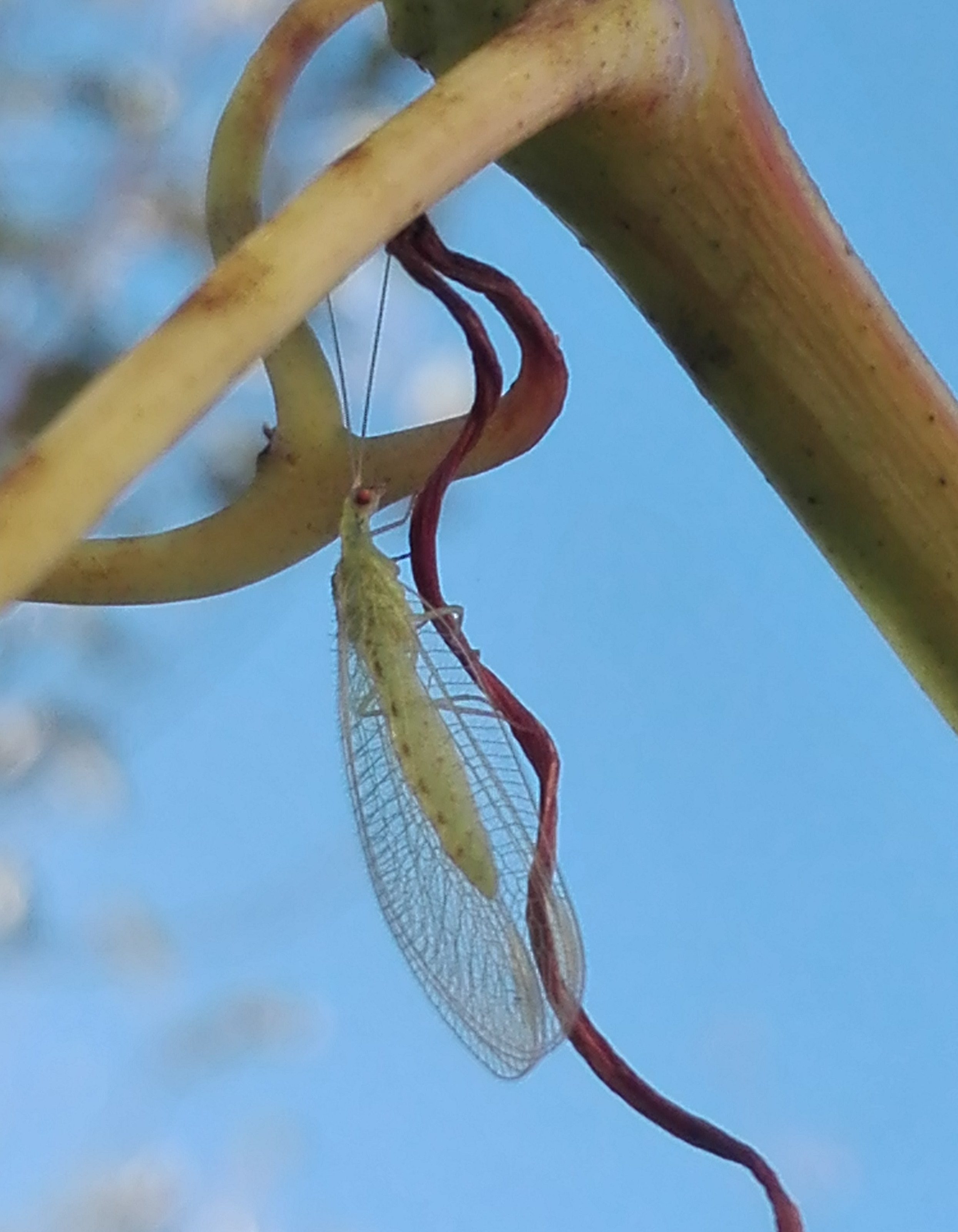It’s 5-6 Centigrade, but surprisingly there are still some insects about. The first is a rather pretty mirid bug - Pantilius tunicatus (#367) - that dropped in via my window last week. Recognisable by its reddish-above, bright green-below colours, this species is a late season bug, seen mostly in September-October, that prefers hazel, alder & birch trees. Common Drone Fly (# 379, Eristalis tenax) is a species which can also be seen all year round. It’s a common enough insect, so not sure how it took me so long to record it. This one was taking advantage of midday sunshine for a bit of sunbathing on a south-facing wall. Finally this lacewing popped up out of some vegetation I was tidying. I think it’s a Common Green Lacewing (#267, Chrysoperla carnea), same as many I found during the summer (though the dark spots down the side are a bit curious). This species hibernates over the winter, changing its colour to brown so as not to be quite so conspicuous to predators.

